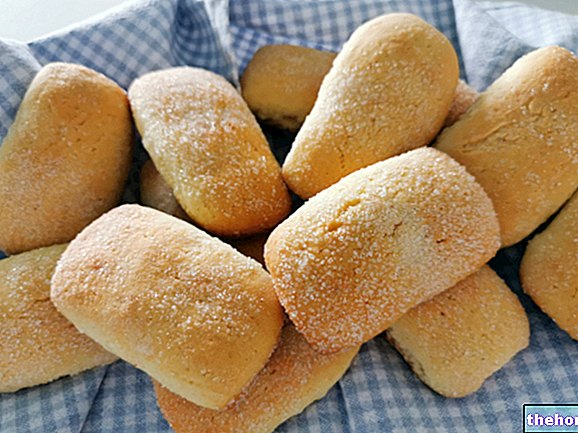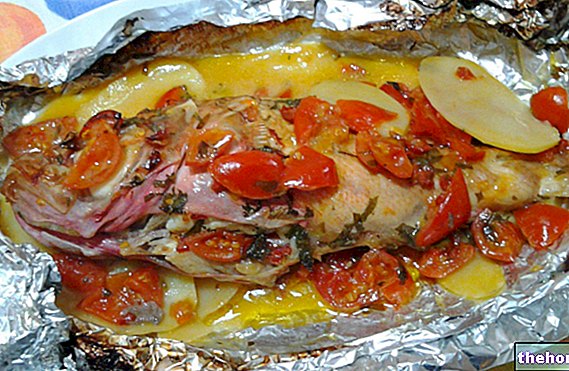Do you want to prepare a soft baked cake but have run out of baking powder? Do not worry: we can soon overcome this problem by preparing the yeast at home. There are two categories of yeasts:
- Natural or live yeasts (e.g. brewer's yeast and mother yeast), which require leavening out of the oven
- Instant-acting chemical yeasts (do not require resting time)
Video of the Recipe
Problems with playing the video? Reload the video from youtube.
Identity Card of the Recipe
- 64 KCal Calories per serving
-
Ingrediants
Example of Preservable Dry Yeast (for 500 g of flour)
- 6 g of cream of tartar
- 3 g of baking soda
- 6 g of cornstarch
Example of non-storable instant yeast (for 500 g of flour)
- 4 g of baking soda
- 125 g of sour cream, buttermilk or yogurt
Example of non-storable instant yeast (for 500 g of flour)
- 2 g of baking soda
- 1 teaspoon of lemon juice or vinegar
Materials Needed
- Scale weighs food
- Bowl
- Jar for storage
Preparation
Ingredient analysis
Cream of tartar is the invented name attributed to POTASSIUM BITARTRATE, that is the potassium salt of tartaric acid. This substance crystallizes in the barrels during the fermentation of the must or is formed in the fresh grape juice left to rest, precipitating on the bottom in the form of crystalline powder. In food it is used to stabilize egg whites (maintaining consistency and volume because its acidity favors the coagulation of the globulins of the egg white), whipped cream and to maintain the beautiful color of the vegetables. To transform it into a leavening agent, the cream of tartar must be added to a base (e.g. baking soda) and mixed with water to react.
Sodium bicarbonate is another substance widely used in cooking as a component of instant-acting yeasts. To obtain the leavening effect, sodium bicarbonate must react with an acidic compound to produce carbon dioxide (cream of tartar, vinegar, buttermilk, lemon juice, sour cream).
Corn starch: it is an inert substance, which means it has no impact on leavening. Its presence in a sweet / savory yeast is important for absorbing moisture, making the compound preservable and preventing the acid-base reaction before "use in cooking.- To prepare the instant baking powder (can be stored), mix the cream of tartar with the baking soda and corn starch. Sift the mixture, collect it in a container with a screw cap and store for 4-6 months in a dark and protected from heat sources. The recommended doses are sufficient to let a dough made up of 500 g of flour rise. To give a vanilla aroma to the instant yeast, you can add a sachet of vanillin or enrich the powder with seeds from a pod vanilla.
Did you know that
When the two ingredients are made to react, the slight acidity of the cream of tartar causes the hydrolysis of the bicarbonate and the consequent production of carbon dioxide.- Another way to make dough rise is to mix baking soda with an acidic substance, which can be lemon juice or vinegar. The yeast must be added as the last ingredient, just before baking the cake. The recommended doses are sufficient to make 500 g of flour rise.
- By mixing ammonium bicarbonate with yogurt, buttermilk or sour cream you get another leavening agent, perfect for freshly made (but not storable).
What about ammonium bicarbonate?
This substance is also used in some doughs as a leavening agent. In particular, it is suitable for the preparation of biscuits, crackers or in any case products with a low moisture content. If the product to which it is added is rich in water, the dough tends to retain ammonia, therefore the recipe would not be good. It is used in doses equal to 10g / 500g of flour. Before being added to the "dough, dev" be dissolved in milk.Alice's comment - PersonalCooker
You can use homemade instant yeast for sweet and savory: you will get excellent results. You can choose the method you like best: by mixing cream of tartar with sodium bicarbonate and starch you can obtain a powder that can be stored for a long time ... and say goodbye to ready-made yeasts (you will save a lot of money by preparing the yeasts with your own hands)!Nutritional values and Health Comment on the recipe
Instant Yeast is a leavening starter based on the formation of small gaseous bubbles inside the dough.
The three proposed variants have different chemical characteristics, which is why the values shown alongside constitute an average. They have an energy intake that can be negligible, almost zero, or at most equivalent to that of a portion of low-fat yogurt.
Calories are mainly provided by carbohydrates, followed by proteins and finally by marginal levels of lipids.
Carbohydrates are mainly complex, peptides of high biological value (from yogurt) and saturated fatty acids (from yogurt).
Cholesterol and fiber are absent or present in negligible quantities.
Instant Yeast is suitable for most diets and does not affect the nutritional balance even in the case of overweight or metabolic pathologies.
It does not contain gluten, which is why it lends itself to the diet for celiac disease.
It provides lactose and does not lend itself to the nutritional regime against the respective intolerance.
The first two variants are accepted by the vegetarian and vegan philosophies; the third, with yogurt, only from the vegetarian philosophy.
The medium portion is that necessary to perform the function of leavening agent.





-panettone-di-pasqua.jpg)






















